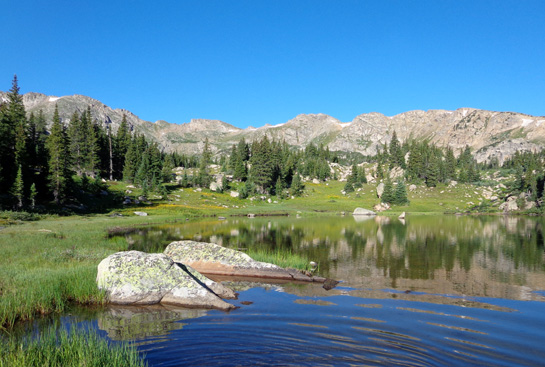The Georgia tourism industry refers to the
scenic subtropical St. Simons, Little St. Simons, Jekyll, and Sea islands
as "The Golden Isles." The islands comprise a major resort
area located on the Atlantic sea coast just north of Cumberland
Island and east of the small city of Brunswick.
Evidence of habitation by American Indians dates
back to at least 2500 B.C. Spain claimed the islands as the Golden Isles
of Guale in the 1500s, then ceded them to Great Britain in 1763.
French cultural influences were also added to
the mix before the land became part of the colony of Georgia and later
the United States of America.
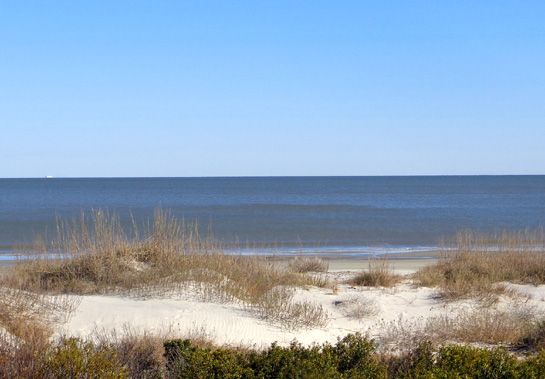
Dunes on Jekyll Island at high tide
Like Cumberland, these barrier islands
help protect the mainland from ocean winds, tides, waves, and storms.
Their beaches allow surfing, swimming, diving, shelling, fishing, clam digging,
picnicking, birding and other wildlife, photography, kayaking/boating, and long walks
along the shorelines.
Inland, visitors and residents enjoy
sightseeing, camping, cycling, tennis, golf, nature walks, horseback
riding, resort living, shopping, historical tours, and many other diversions.
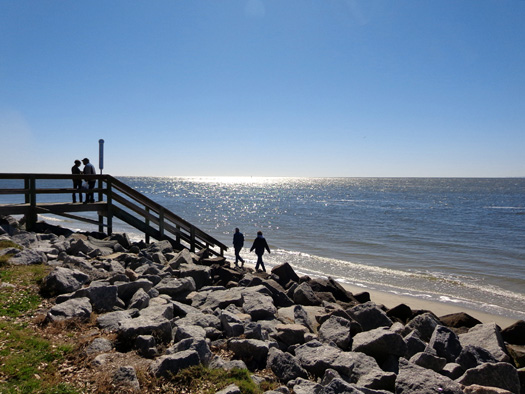
High tide on the beach at Neptune Park, St. Simons Island
Accommodations on St. Simons and Jekyll islands
range from basic to luxurious.
Sea Island and Little St. Simons islands
are both privately owned. They are upscale resorts restricted to their guests and members.
ROAD TRIP!
In the twenty-five years I lived in the Atlanta
area I visited Jekyll and St. Simons Islands several times but I haven't
been there since the 1980s. Jim's never been to either island so we
decided to see them on a day trip.
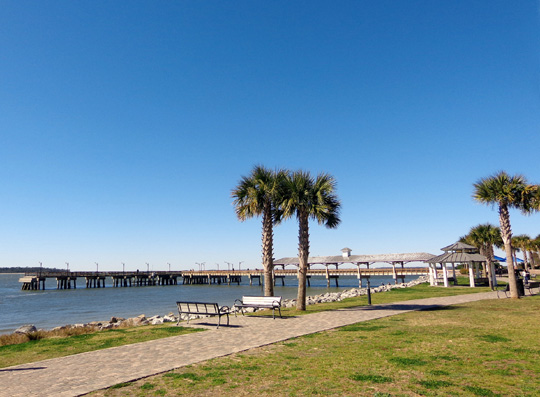
View to a
pier at Neptune Park, St. Simons Island
Today was sunny but windy and chilly (upper 20s
F. at Kings Bay overnight, 50s during the day). Since it was cool we took the dogs with us.
We left our campground at Kings Bay Sub Base about 10:30 AM and had time
to drive around both islands.
You can find a wealth
of free information about the Golden Isles on the internet and in
tourist publications. I'll try to give just some basic facts and
impressions of St. Simons and Jekyll islands in this entry.
ST. SIMONS ISLAND
We headed west to I-95 and got off at exit 29 near Brunswick.
We followed US 17 east and north to Brunswick across the handsome Sidney
Lanier suspension bridge (no fee),
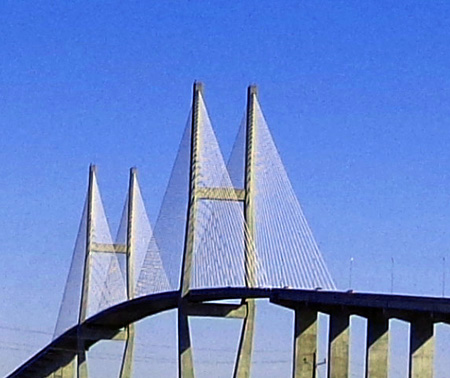
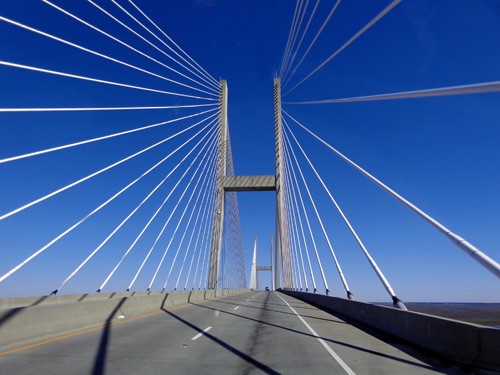
. . .
then went east on the Torras Causeway
to St. Simon's Island. We crossed the scenic Marshes of Glynn, made
famous by poet Sidney Lanier.
St. Simons is the
largest of the four Golden Isles but has fewer miles of beach than the
others.
We went to the visitors' center at St. Simons first. It's in a handsome
building on Beachview Drive above Neptune Park and adjacent to the old
lighthouse:
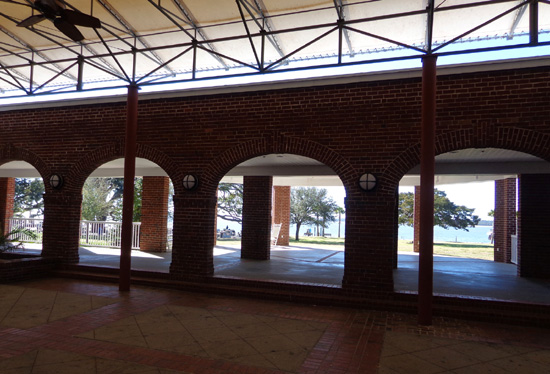
Looking out
the visitor center to the ocean
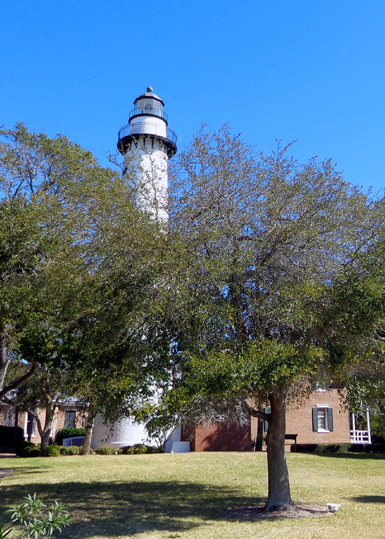
Old St.
Simons lighthouse
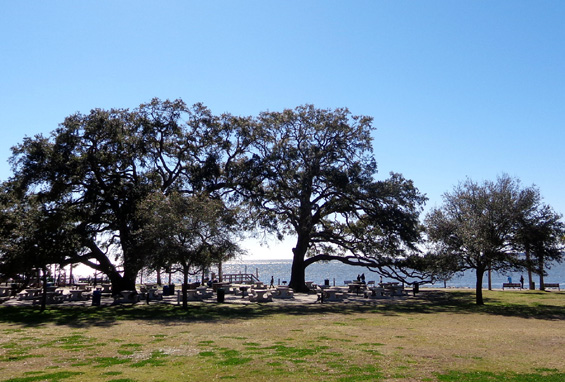
View of
Neptune Park and the Atlantic Ocean from the visitor center
After picking up some information we walked to the paved path above the
ocean; the tide was nearing its high point below the rocks used
to protect the shoreline.
This is a beautiful park with lots of grass and huge live oak trees:
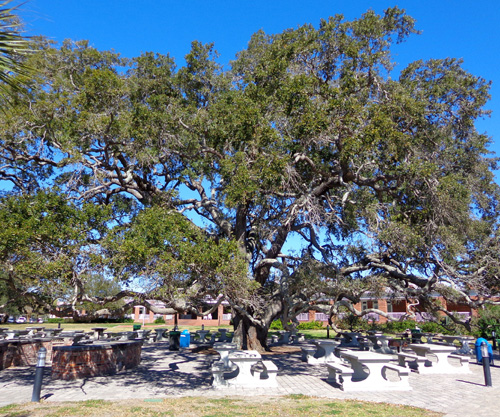
Picnic
tables under a sprawling live oak tree at Neptune Park
Unfortunately, we weren't dressed warmly enough to be out in the wind
more than about twenty minutes by the ocean so we didn't stay long.
We drove along Beachview Dr. and Ocean Blvd. to the Maritime Center but
didn't go in:
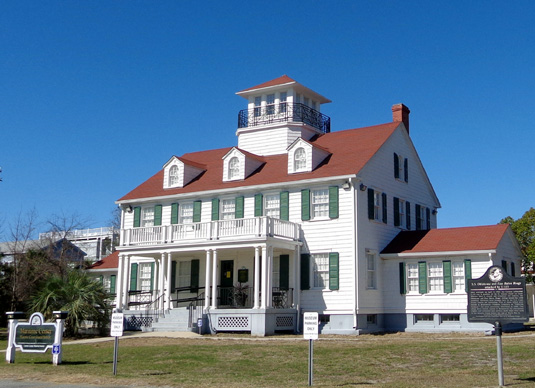
This museum is housed in the historic Coast Guard station near St.
Simon's east beach. It offers a historic view of coastal Georgia's
maritime and military history.
On our way north on Frederica Road to Fort Fredericka National Monument
we passed the Sea Palms golf course and noted a bike path along the road:
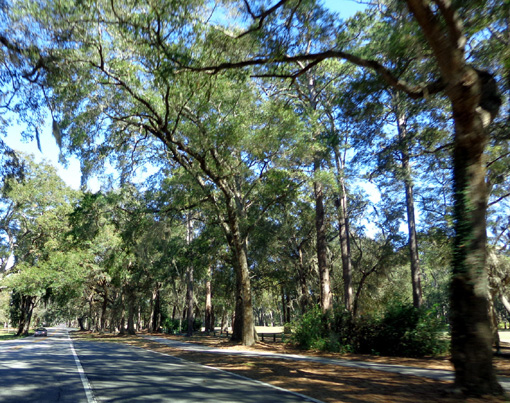
There is so much to see at Fort Frederica that I will do a separate
entry on the national monument.
HISTORIC CHRIST CHURCH
After we toured Fort Frederica we stopped for a few minutes nearby at Christ Church, one of
the oldest church congregations in the U.S. It was established in 1736 as
a mission of the Church of England.
The present building was erected in 1884. The Episcopal congregation
welcomes visitors to its services
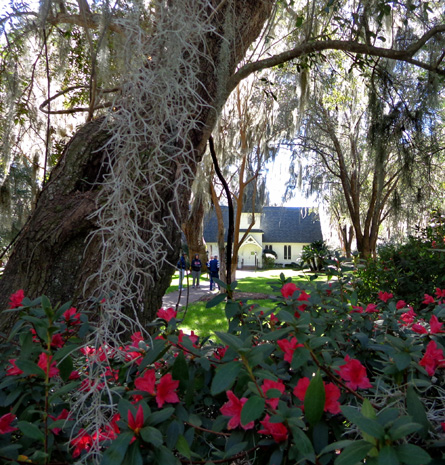
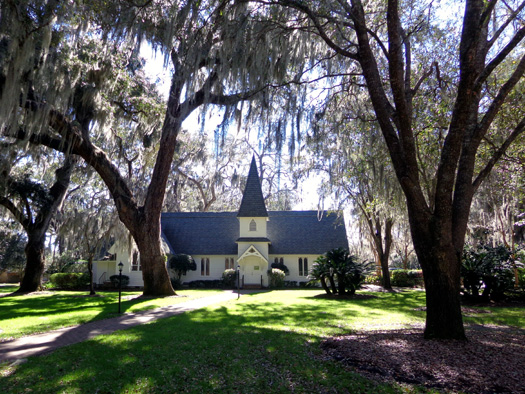
I spent about ten minutes walking through the cemetery. There are some
folks buried there who were born in the 1700s:
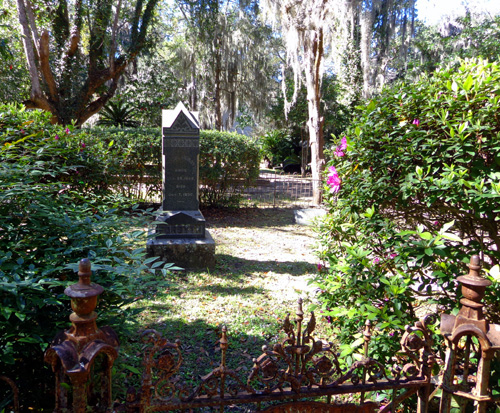
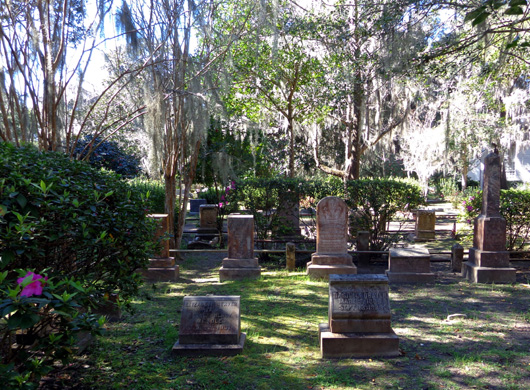
We took the road to Sea Island but the whole thing is gated so we turned
around and went back to St. Simons.
BATTLE OF BLOODY MARSH
It took some effort but we finally located the site where the Battle of
Bloody Marsh was fought.
It's a national monument about six miles from Ft. Frederica. It was the
site of the last battle between Spain and Britain over the Georgia and Florida
coastal territory. Britain won this battle.
There are interpretive panels and a
stone monument:
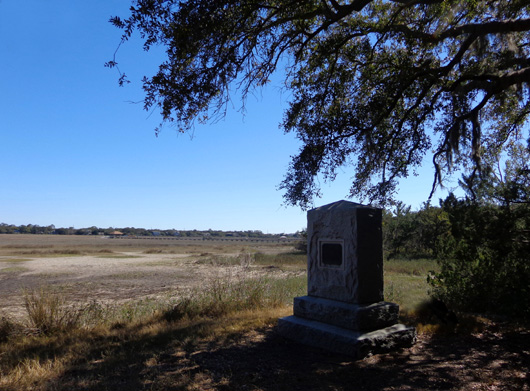
We were the only ones there so we let the dogs run around a little bit.
As we were leaving a busload of people arrived. Good timing.
JEKYLL ISLAND
Since it was only about 2 PM we decided to go to Jekyll Island, too.
There is a $6 daily fee to enter the island.
Jekyll is more natural than St. Simons. It used to be a state park but
since 1950 the island has been run by the Jekyll Island Authority. At
least 65% of the island must remain wild to preserve wildlife and protect natural habitats.
Wiki explains how it works.
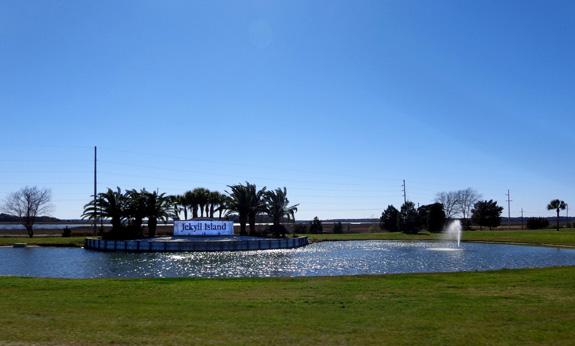
We probably should have gone to the visitor center first but didn't. I
already had some information and a map of the island so we just winged it.
We drove a figure-eight around Jekyll so we could see a variety of open
spaces, beaches, houses, and businesses.
There are bike paths all around the island. They'd be nicer to ride than
the ones on St. Simons because so much of this island is natural.
I got out of the truck only a couple times -- at Great Dunes Park
to overlook the dunes and ocean . . .
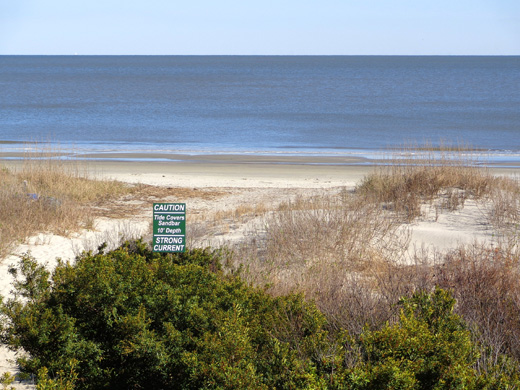
At high tide
you can't see the sand bar that's covered by ten feet of water;
that's what
the sign warns people about. The tide looks like it's just about at max.
. . .
and at the ruins of the old Horton House, built in 1742-3:
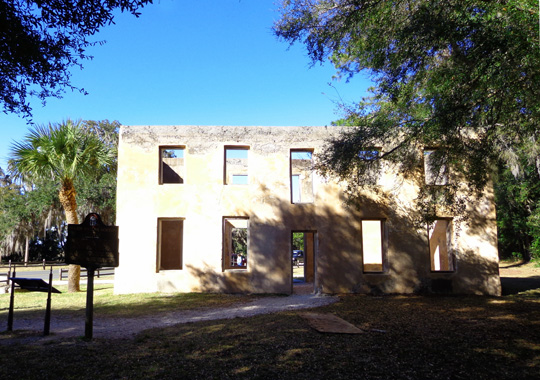
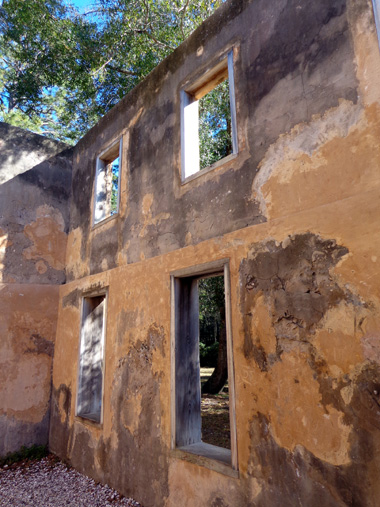
This building, one of the oldest in
Georgia, was constructed by Major William Horton. It is on the National
Register of Historic Places.
We drove through the Jekyll Island Campground. It's nice for folks with
smaller RVs but the sites are too close together if you have a larger one.
We also drove through part of the historic landmark district AKA
"Millionaires' Village." The Jekyll Island Club Hotel and surrounding
summer "cottages" were once home to some of America's most wealthy and
influential families, including the Vanderbilts, Pulitzers, Cranes, and
Morgans:
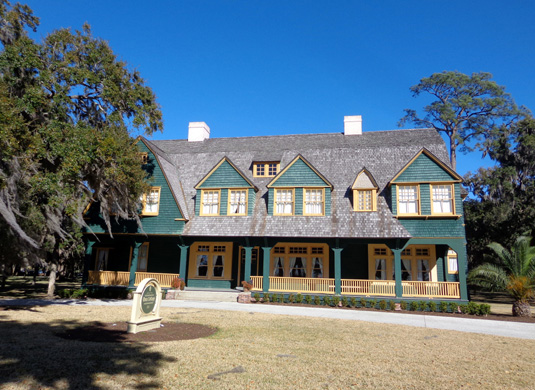
The Moss Cottage
This hunting and golf resort was the scene of some historic moments,
including the first transcontinental telephone call. This large historic
district (240 acres, 33 structures) has been fully restored and is a
beautiful place to walk or drive through.
There are a lot of things for folks of all ages to do at both St. Simons
and Jekyll Islands. The weather is good most days of the year for day
visits or extended stays.
Next entry: touring Fort Frederica National Monument
Happy trails,
Sue
"Runtrails & Company" - Sue Norwood, Jim O'Neil,
Cody the ultra Lab, and Casey-pup
Previous
Next
© 2013 Sue Norwood and Jim O'Neil
